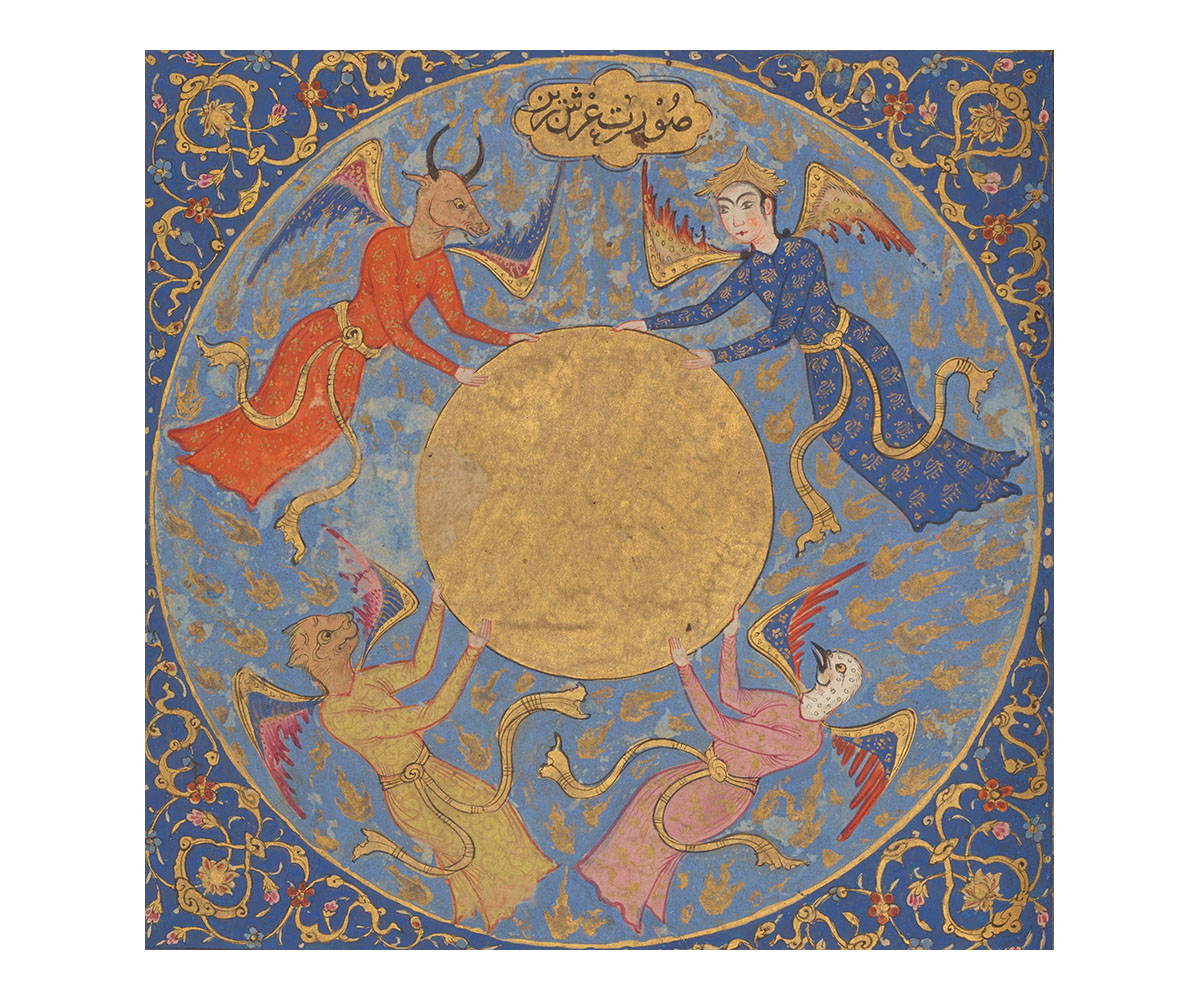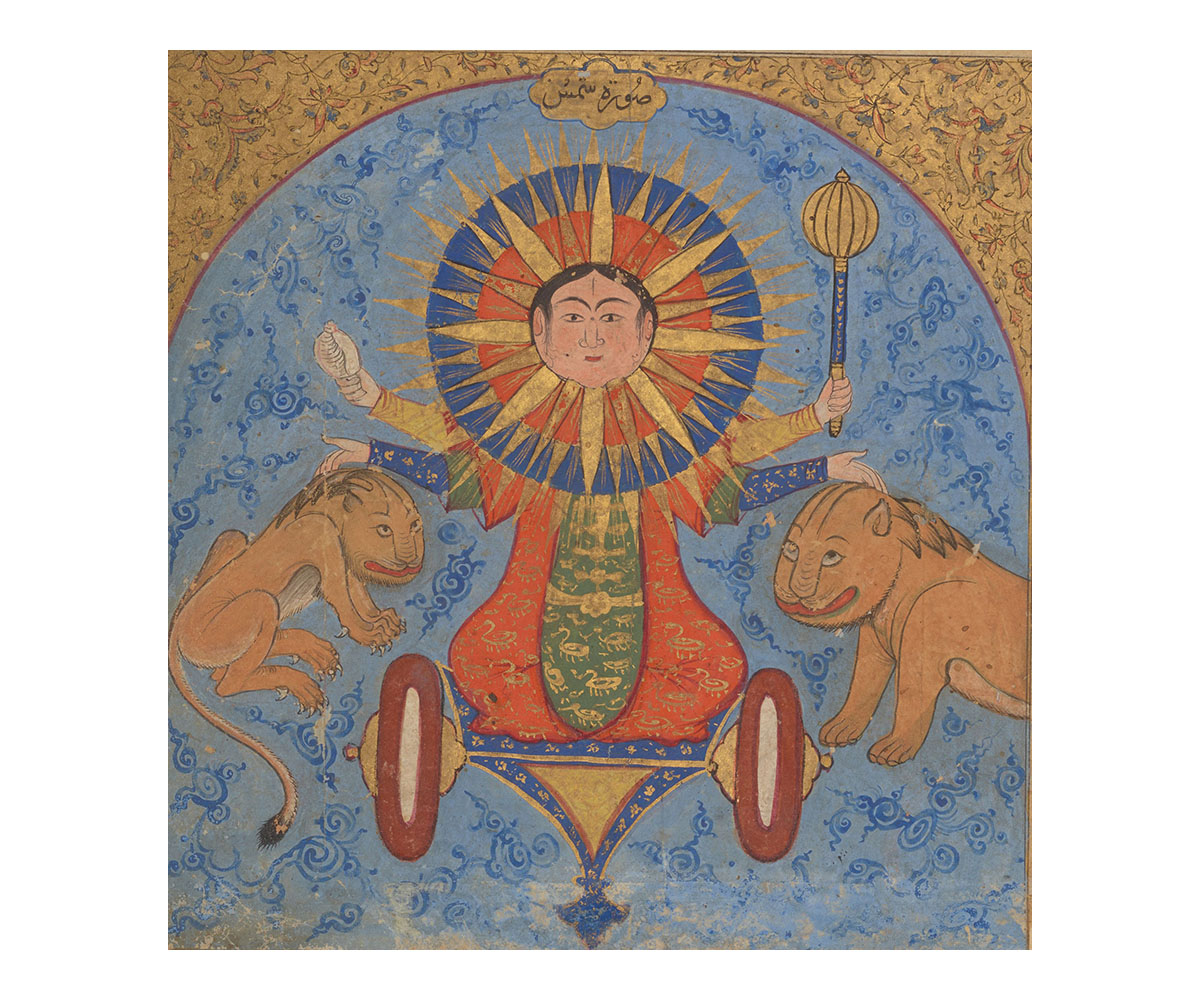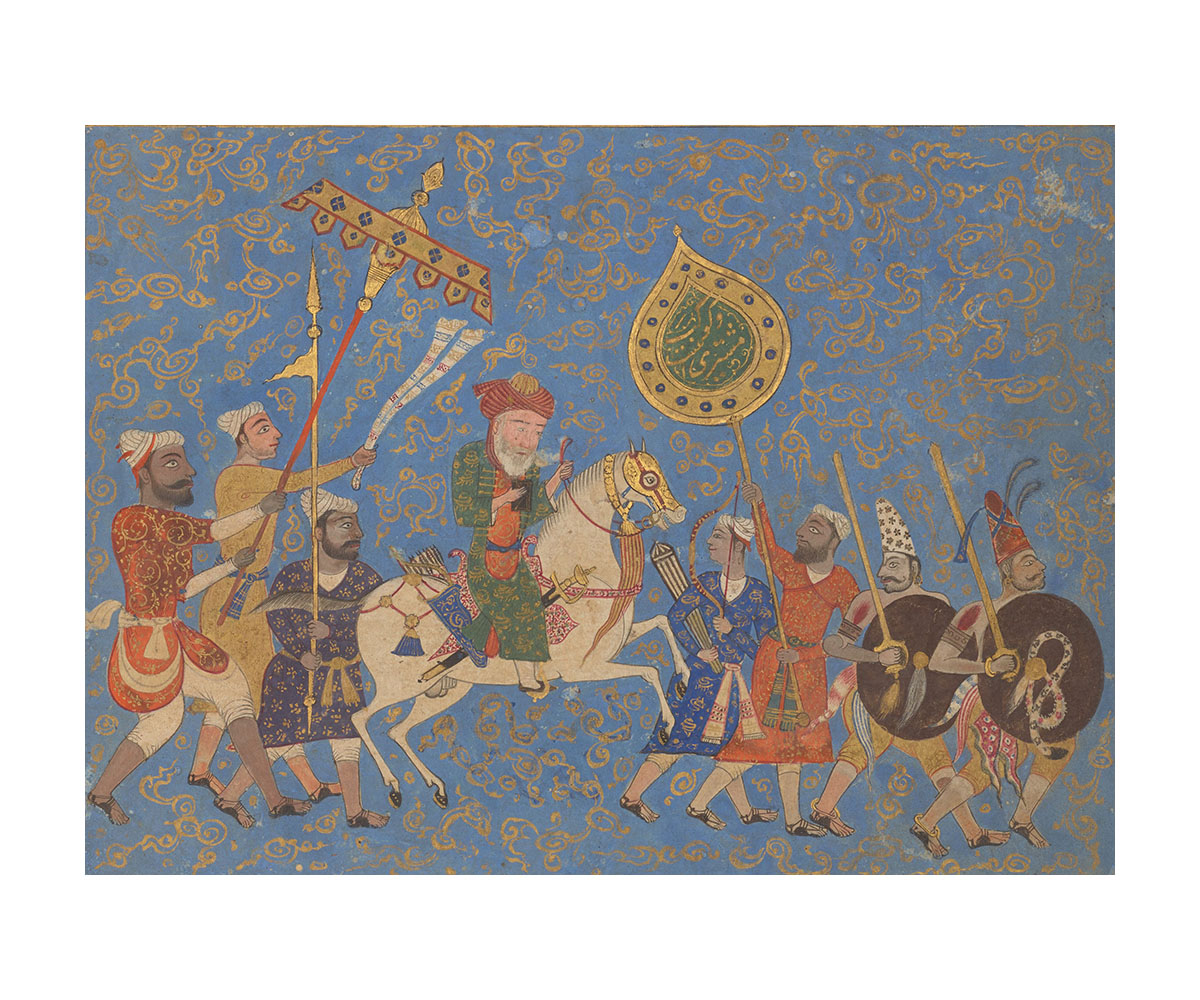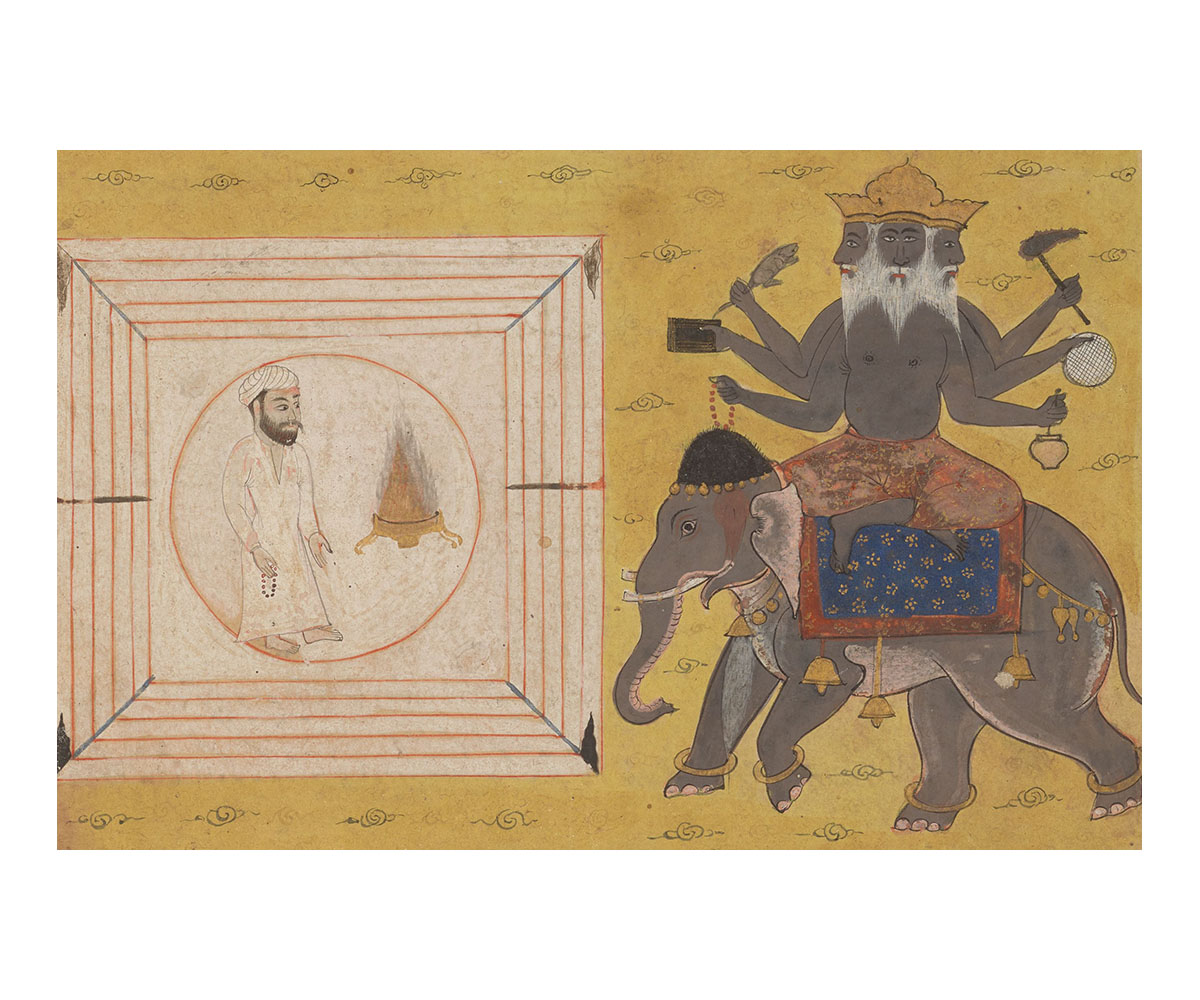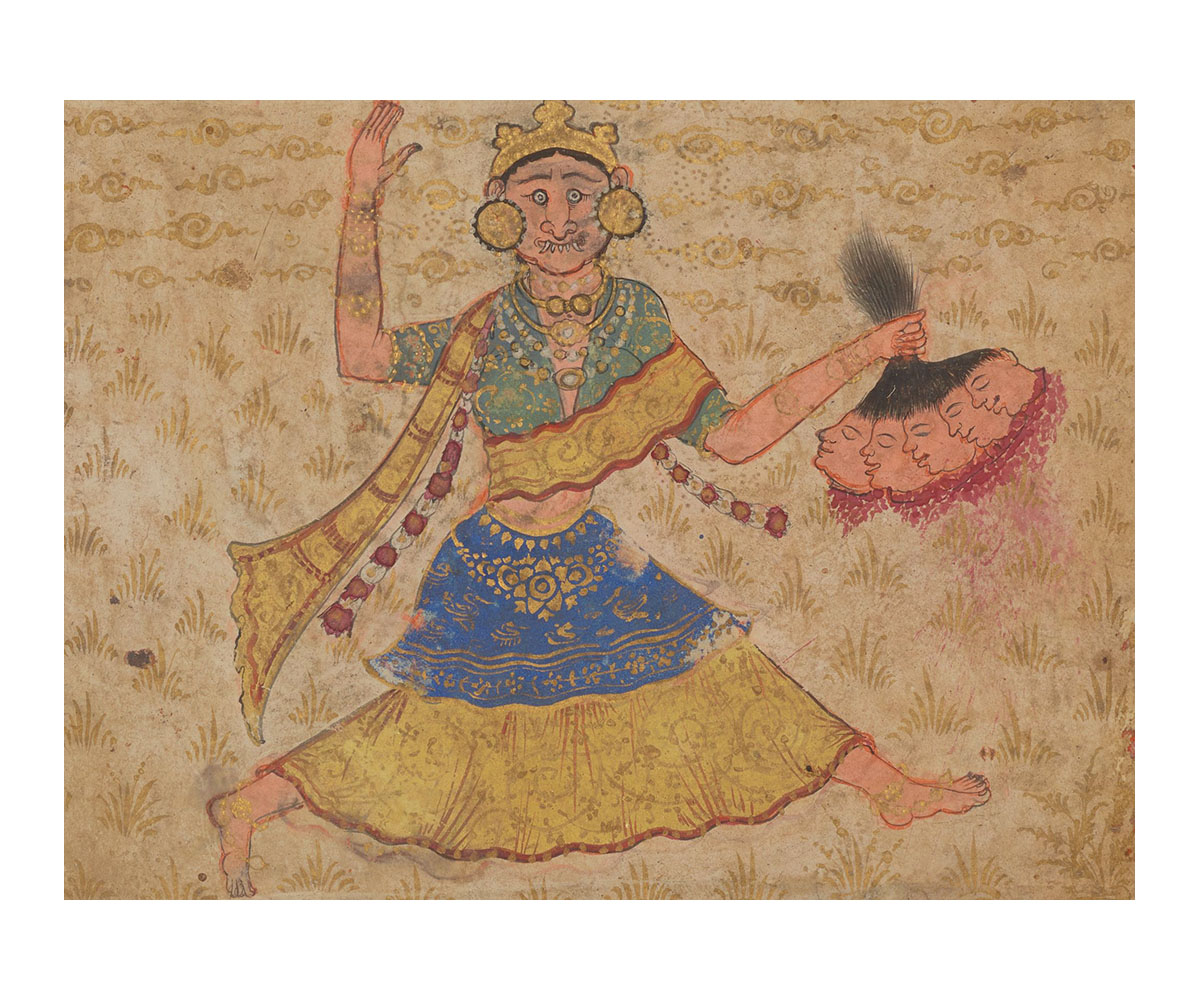PERSPECTIVES
What a Sixteenth-century Manuscript Says about Syncretism, Mysticism and Kingship in Bijapur
Angels and heavenly beings, planets and constellations, talismans and spells to conjure spirits — Completed in 1570–1571 CE, the Nujum al-Ulum, or ‘Stars of the Sciences’, is a treatise that delves into these topics in astrology and mysticism and their relationship to kingship and power. Likely originating in the Bijapur Sultanate, it is one of the earliest dated manuscripts that provides an insight into the painting traditions of the Deccan region in India. Centred in the city of Bijapur (now Vijayapura) in present-day Karnataka, the Bijapur Sultanate came into being in the closing decades of the fifteenth century and its cosmopolitan courtly culture and deep ties to the Persianate world were articulated through its art.
Although its subject matter may appear unconventional, Nujum al-Ulum’s contents and illustrations — which draw on Islamic, Vedic and Indic knowledge systems and artistic traditions — provide a window into the Deccan region of the early modern era. Persianate influences had long been absorbed into the cultural milieu of the Deccan. Among the later Deccan Sultanates, the rulers had familial links with the Persian and Turkish states. The courts employed local Hindus and Muslims, along with emigres from Central Asia and Eastern Africa. Artists and artisans, both local and Persian, were also employed by the courts. The manuscript painting tradition of the Deccan Sultanates borrowed from local Jain and Hindu art, along with Persian sources, in its formative period in the sixteenth century.
It is against this backdrop that the Nujum al-Ulum was created. There is no inscriptional evidence detailing its authorship, patronage or artists. However, historians have attributed it to Bijapur on the basis of artistic style. The profuse illustrations — nearly 800 — and the use of materials like gold and lapis lazuli suggests the manuscript was most likely a courtly endeavour produced in a kitabkhana (library and book-making workshop) employing several calligraphers and artists. Historians, therefore, suggest that the patron may have been Ali Adil Shah I, acknowledged as a bibliophile and scholar, whose kitabkhana employed almost sixty people.
Nujum was heavily inspired by the thirteenth-century cosmographical treatise, Aja’ib al-Makhluqat wa Ghara’ib al-Mawjudat, attributed to the Persian geographer Zakariyya’ al-Qazwini. The text was immensely popular in the Islamic world including in the Deccan. Several copies of the Aja’ib al-Makhluqat were produced in the Deccan region, including one that was almost contemporary to the Nujum. The sections of the Nujum follow the template established by the Aja’ib al-Makhluqat and the paintings in both the Nujum and its contemporary Aja’ib are illustrated in a distinctly Persian style.
The planned scope of the treatise was an ambitious one, with the unnamed author stating that they hoped to record the discourse around astrology, medicine, war elephants and horses, perfumes, gardening and culinary arts, among other subjects. The sections it covers deal with heavenly beings in Islamic astrology, northern and southern constellations, planets, zodiac signs and nakshatras (star groupings) of Indic astrology, spells for summoning spirits, objects associated with kingship, and 140 ruhanis (primarily female Hindu Tantric deities who are likely associated with pithas, or pilgrimages sites), and sections on horses, war elephants and arms. The text was addressed to a ruler, with the purpose of enlightening him about the cosmic forces that could be controlled to enhance his authority and reign.
In its representation of planets, zodiac signs and nakshatras, the Nujum draws on ancient Indian astrological systems. The scholar Deborah Hutton has examined how the visual depictions of the anthropomorphised planets, star clusters and their degrees combine Islamic and Hindu elements. For example, Mars has been conventionally depicted as a warrior in Islamic cosmological treatises; the Nujum presents the depiction of the planet as the mythical Persian warrior Rustam, riding a ram. However, in a departure from convention, the figure is shown with multiple arms and bears a trident in one hand, a symbol that is conventionally associated with the Hindu deity Shiva. Similarly, the depiction of the Sun shows the figure in a chariot drawn by lions, but this personification also holds a conch and mace, objects associated with the iconography of the Hindu deity Vishnu. Following Islamic convention, Jupiter is depicted as an old man. However, in the Nujum, he is represented as a sultan with his retinue, dressed in garments recalling those depicted in the murals of the Vijayanagara kingdom, which themselves were influenced by local and Islamicate dress.
Where the section on spells depicts the key person conducting the ceremonies as a Sufi cleric, the author likens the ritual diagrams to mandalas and chakras — the geometrical drawings common in Buddhist, Jain and Hindu religious art. Similarly in the section on objects surrounding an ideal ruler, the term chakravartin, which references an ideal ruler in Buddhism, Jainism and Hinduism, is used without explanation, implying that it was common knowledge. Similarly, in a full-page depiction of a ruler seated on a seven-storied throne, surrounded by consorts, subjects and courtiers, richly painted with blue and lapis lazuli, the throne is referenced by its Sanskrit term — simhasana chakra.
The Nujum’s depiction of Tantric deities, predominantly female in both beautiful and fearsome forms, specifically ruhanis, is derived from Hindu Tantric knowledge systems. The author stresses his unfamiliarity with the material and credits Hindu sources for the information. The visual depiction of these deities is also starkly different in style when compared to the rest of the manuscript. The deities are depicted with tall, broad shoulders and slim waists, a style that resembles murals of the Vijayanagara period. This distinction in style has led historians to suggest that this section of the text was likely illustrated by artists who had migrated to Bijapur from Vijayanagara after the Battle of Talikota in 1565, when an alliance of Deccan Sultanates defeated the Vijaynagar kingdom. While there are no surviving illustrated manuscripts of the Vijayanagara kingdom, the visual style of painting is evident primarily through the murals at sites such as the Virupaksha Temple, Hampi and the Lepakshi Temple in Andhra Pradesh.
Scholars, including Hutton and Emma Flatt, have suggested that the placing of different knowledge traditions and sources at par with each other in a text like the Nujum highlighted how patrons and courtiers were invested in a shared vocabulary of ideas. Knowledge of these systems pointed to cosmopolitan leanings that could benefit rulers in retaining talented courtiers. It meant that a courtier viewing the image of Mars or the Sun could pick up on the significance of the different iconographic systems. It also meant that the artists themselves were adept at creating these messages, recognising the diversity around them. Whether the purpose of the text was to guide someone in esoteric practices or inform a ruler of cosmological ideas, through its appropriation of ideas and aesthetic traditions from a range of references, we can regard the text as a record of the syncretic visual and intellectual practises of the Bijapur court.





